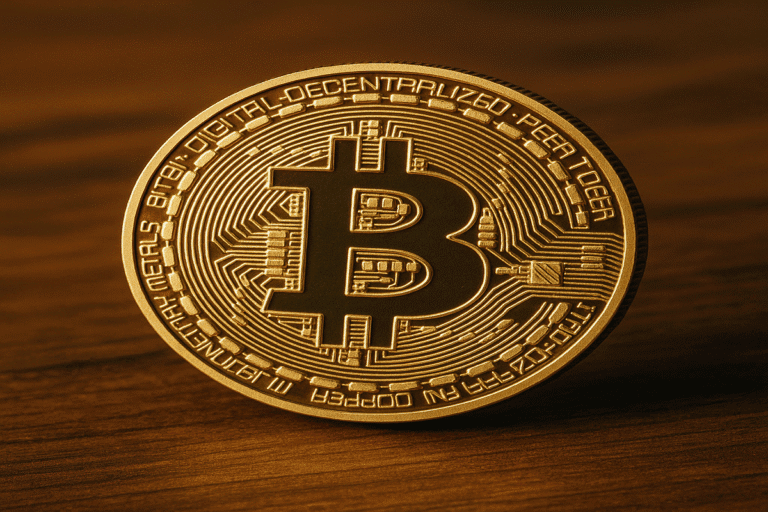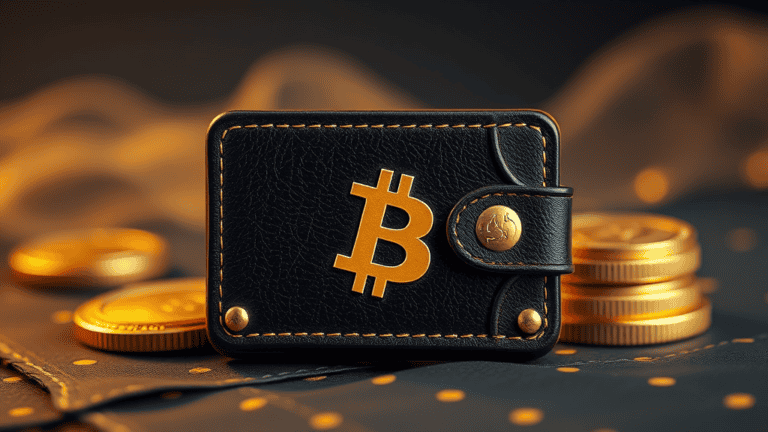Why I Became Interested in Blockchain: My Journey from 2008 to Decentralized Solutions

Intro
In 2008, I watched The Great Recession unfold and saw firsthand how the burden fell on people I knew, while the institutions that caused the damage were protected.
That experience planted a seed and left me wondering:
What the heck was going on? How could something like this happen?
This post explains why that question led me to focus on blockchain, what “decentralization” really means (and why it’s often misunderstood), and how true decentralization can change the way we buy, sell, and protect property.
A Defining Moment in 2008
In 2008, while working for my family’s oil and fuel distribution company in Orlando, Florida, I witnessed the Great Recession up close.
Fuel prices soared.
Trucking companies struggled to deliver goods.
Construction firms slashed budgets and laid off hundreds of employees.
I still remember a CEO whose eyes were wet with tears, telling me he had to let go of one hundred people.
The personal toll was devastating. Friends lost businesses they had built from scratch. Extended family members were forced to short-sell their homes. People were not just losing jobs; they were losing stability, identity, and the future they had been building towards for years.
What struck me most was how the “solutions” to the crisis protected the very institutions that caused it, while people just trying to take care of their families bore the cost. One of those solutions was Quantitative Easing (QE) – a technical term for creating money out of thin air and injecting it into the financial system.
How QE Works – and How It Hurt the People It Was Supposed to Help
The U.S. dollar is not backed by gold or any fixed asset. Its value comes from supply and demand in the market and the trust people place in it.
When the Federal Reserve used QE in 2008, it:
Created massive amounts of new dollars electronically – literally just by adjusting its ledger.
Used them to buy government bonds, mortgage-backed securities, and other assets from banks and large institutions.
Flooded the financial system with liquidity.
The problem:
The number of goods and services stayed the same.
Each dollar now represented a smaller fraction of total value which is just currency dilution.
Think of it like coffee: If you pour water into your coffee, you don’t get more coffee – just weaker coffee.
When each dollar is worth less, it takes more dollars to buy the same product. Prices rise not because the product is more valuable, but because your currency buys less, A.K.A inflation.
The result:
Asset prices (stocks, real estate) surged, benefiting those who already owned them.
People without assets and whose wages stagnated saw their purchasing power decline.
The wealth gap widened, not by accident, but as a direct consequence of the system’s design.
For me, this was the moment I saw the full picture: the system was not just fragile, it was a house of cards built to protect those at the top while those at the bottom absorbed the risk and loss.
The Bridge to Decentralization
After 2008, I became fascinated by decentralization = the idea of building systems with no single point of control or failure.
I first encountered this concept in the book The Starfish and the Spider by Rod Beckstrom and Ori Brafman, which described how distributed networks can adapt and survive where centralized ones collapse.
At first, it was just an intellectual interest. But when I later entered real estate, I saw the financial system up close again and the layers of gatekeepers, approvals, and intermediaries interpreting information and managing every transaction.
It became obvious how vulnerable the process was to the same concentration of power I had seen in 2008.
That is when I became deeply interested in blockchain and how the principles of true decentralization could be applied to property transactions, replacing fragile bottlenecks with transparent, distributed trust.
As a result of my research I am now a Propy-Certified agent, partnering with the first PropTech company to successfully bring real estate “on-chain.”
Why “Decentralization” Is So Misunderstood
The word “decentralization” is often misunderstood – and sometimes deliberately misused — because old systems are hard to kill.
Two very different realities exist:
1. Centralized Decentralization
Branded as “decentralized” but controlled by a small group.
A handful of token holders, developers, or validators make all major decisions.
Real World Parallel: A franchise that claims each location is independent, but corporate approves all big moves.
2. True Decentralization
Power and verification are genuinely distributed.
No single participant’s removal or corruption can compromise the network.
Real World Parallel: The internet, as if one server fails, the network routes around it without interruption.
How True Decentralization Works
True decentralization relies on protocols and consensus mechanisms including the way a network agrees on what is true.
Examples:
Proof of Work (PoW) – Used by Bitcoin. Independent miners validate transactions by solving math problems.
Parallel: A jury where hundreds must agree before a verdict is final.Proof of Stake (PoS) = Used by Ethereum. Validators lock up their own tokens and lose them if dishonest.
Parallel: A co-op where members lose their deposit if they break the rules.Delegated Proof of Stake (DPoS) – Used by EOS. Token holders elect a few delegates to validate transactions.
Parallel: A small town council which can be efficient but is inherently more prone to centralization.
Key point: The closer decision-making gets to “a few people,” the closer you are to centralization again.
Why This Matters in Real Estate
Real estate is full of single points of failure: title companies, banks, escrow services, county recorders.
And sometimes, the barriers are coercive. For example:
You could be a multimillionaire with no debt, but without a credit score you may still be denied financing. The system forces you to interact with debt just to keep a “good” score.
Blockchain, when truly decentralized, changes this by turning property into a tokenized Real World Asset (RWA) recorded on an immutable ledger.
This allows:
Transparency You Can Verify – Every step recorded on-chain, visible to all parties.
Reduced Counterparty Risk – Smart contracts enforce agreements without bias or favoritism.
Global Access to Capital – Bitcoin-backed mortgages and crypto payments expand buyer pools.
Speed and Security – Wallet-to-wallet transfers settle quickly, reducing fraud risk.
Montana’s Forward-Thinking Stance
Montana has recognized the opportunity, passing bills like SB 265 and SB 330, which:
Outline decentralized infrastructure
Encourage research and education on crypto and blockchain
Reject Central Bank Digital Currencies (CBDCs) that re-centralize power in digital form
But we must remain vigilant – programmable money is exactly what it sounds like, and stablecoins could be made CBDC-like. Staying informed is essential.
Why I Care
The Great Recession showed me what happens when power is concentrated and accountability is absent. My work in real estate confirmed how fragile and manipulated our systems can be.
Blockchain, when implemented with true decentralization, offers one of the most promising paths toward systems that are transparent, resilient, and resistant to capture – where participation is open and rules cannot be rewritten to favor the few.
Your Property, Your Choice
Whether you choose traditional financing, cryptocurrency transactions, or a hybrid approach, my mission is to ensure you understand your options, verify your protections, and make informed decisions that build toward freedom rather than dependency.
Recommended Resources:
“The Starfish and the Spider” – Rod Beckstrom & Ori Brafman
“The Price of Tomorrow” – Jeff Booth







